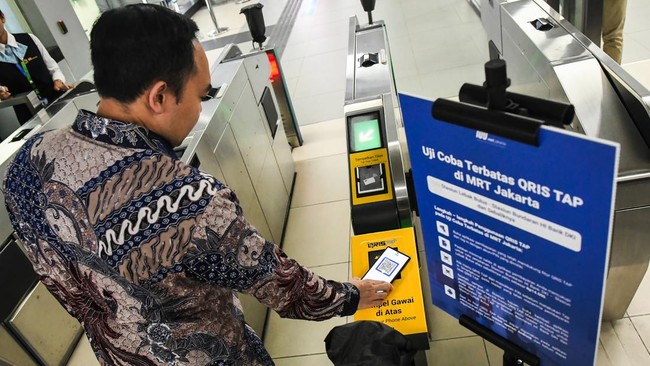Bank Indonesia (BI) has officially introduced the Quick Response Code Indonesian Standard (QRIS) Tap In & Out system for five public transport modes across Greater Jakarta (Jabodetabek). The move is expected to make commuting faster and more convenient, especially for travelers and residents who prefer contactless digital payments.
The launch was held on Thursday (Oct 30) during the Festival Ekonomi dan Keuangan Digital (FEKDI) and Indonesia Fintech Summit & Expo (IFSE) at the Jakarta Convention Center.
The new QRIS Tap payment method can now be used on KAI Commuter Line (KRL), TransJakarta, MRT Jakarta, LRT Jakarta, and LRT Jabodebek.
“We are launching QRIS Tap In & Out for five transportation modes in Jakarta,” said BI Governor Perry Warjiyo, as quoted by CNN Indonesia.
Faster, Contactless for Everyday Commuting
QRIS Tap is BI’s latest digital payment innovation, first introduced in March 2025. Unlike regular QR codes that require scanning, QRIS Tap allows users to simply tap their smartphones or NFC-enabled cards on the payment terminal. The system uses Near Field Communication (NFC) technology for faster and more secure transactions.
Previously, the feature was only available at a few trial locations such as MRT Bundaran HI Station, TransJakarta Royaltrans routes, and several hospitals. Now, the rollout covers Jakarta’s main public transportation networks.
According to Perry, QRIS Tap will enhance travel convenience and promote digital payment adoption among the public.
“This innovation improves the ease and comfort of cashless transactions for everyone,” he said during the earlier introduction in March.
Passengers using QRIS Tap will not be charged transaction fees. Instead, a Merchant Discount Rate (MDR)—the small fee usually applied to merchants—is covered by transport operators. For Public Service Obligation (PSO) and Public Service Agency (BLU) categories, BI has set the MDR at 0%.
This means travelers can enjoy free, contactless transactions, while operators benefit from efficient, cashless systems. Perry said this initiative aligns with Indonesia’s broader goal of creating a more inclusive digital economy.
“This is part of our synergy to support the President’s Asta Cita program, which focuses on building Indonesia’s digital finance ecosystem,” Perry explained.
Expanding to Cross-Border QR Payments
Indonesia is also expanding QRIS use internationally. BI’s cross-border QR payment system is already connected with Malaysia, Singapore, Thailand, Japan, and China, and will soon include South Korea.
BI also plans to extend the network to India and Saudi Arabia, making it easier for Indonesian travelers to make cashless payments abroad and for foreign visitors to pay seamlessly in Indonesia.
With over 48 million QRIS users nationwide, BI aims to make contactless payments a new standard across Indonesia’s transport and retail sectors. The initiative supports the country’s ongoing digital transformation while ensuring affordable access to public services.
As BI continues to work closely with the Financial Services Authority (OJK) and the Indonesian Payment System Association (ASPI), the central bank hopes the QRIS Tap system will become a cornerstone of Indonesia’s cashless economy—bridging innovation, convenience, and financial inclusion, while offering a sense of familiarity to expatriates and travelers accustomed to contactless systems in other major global cities.
Source: CNN Indonesia, Kontan, Investor.id
Photo Credit: ANTARA FOTO/SULTHONY HASANUDDIN


